Have you ever wondered what Montana’s wilderness is like beyond the postcards of its grand mountain vistas and tranquil river valleys? Immerse yourself in the heart of Big Sky Country, and you’ll discover that the state’s landscapes are brought to life by a roll call of diverse and fascinating native wildlife.
With approximately 110 mammal species, 15 amphibian species, 85 fish species, 17 reptile species, around 10,000 invertebrate species, and more than 400 species of birds, Montana houses a collection of wildlife spanning from the heights of the rugged Rockies to the plains of the Great Plains.
In this article, we embark on a journey through the rugged terrains and sprawling wilderness of the Treasure State, uncovering the enchanting stories of its inhabitants – from the majestic elk that roam the mountainous expanses to the elusive predators that command the shadows.
- Related article: Top Things to Do in Montana
Montana’s wildlife is not just a spectacle; it’s a living testament to the resilience and beauty of nature in its purest form. Join us as we unveil the secrets of this wild frontier, where every creature tells a tale of survival, adaptation, and the harmonious interplay of life in one of America’s last great wildernesses.
7 Key Takeaways on Montana Wildlife
- Montana’s wildlife includes iconic game species such as bison and elk, but non-game creatures also play vital roles in the state’s ecosystem, including badgers, golden eagles, and more.
- Montana’s official state animals represent its diverse wildlife, from the formidable Grizzly Bear to the melodious Western Meadowlark.
- In addition to game species, Montana is home to a rich array of predatory animals like the coyote and weasel, providing a unique and often misunderstood aspect of the state’s wildlife.
- The best places for wildlife watching in Montana, including sites like Yellowstone National Park and Glacier National Park, offer diverse landscapes and excellent opportunities to observe wildlife in their natural habitats.
- For more structured wildlife encounters, Montana’s well-preserved State Parks, such as Wild Horse Island and Makoshika, present a variety of animal spotting opportunities.
- If you’re eager to explore Montana’s wildlife on your own, consider a visit to one of the stunning National Parks or Montana’s top wildlife refuges, like Charles M. Russell National Wildlife Refuge.
- Montana’s wildlife is best enjoyed with respect and a spirit of conservation, so don’t forget to check local guidelines and respect the animals’ habitats during your visit.
Wildlife in Montana
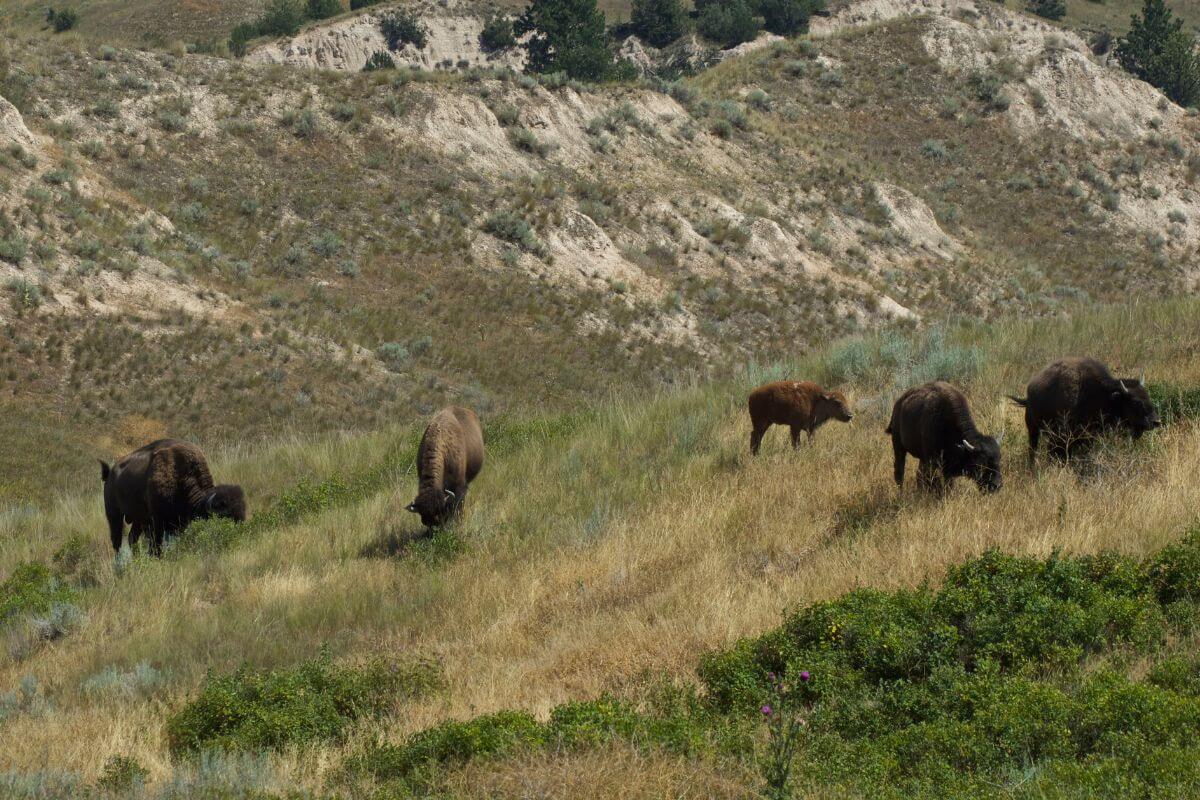
Montana’s wildlife is as diverse as it is stunning, offering enthusiasts a front-row seat to observe nature in its purest form. From the beloved symbol of the American West, the bison, to the elusive gray wolf, the state’s untamed beauty brings joy to the hearts of both visitors and locals alike.
Discovering Montana’s wildlife is an adventure waiting to be embraced, often invoking a sense of quiet reflection and awe. Together, let’s discover what it has to offer.
1. Montana Game Species
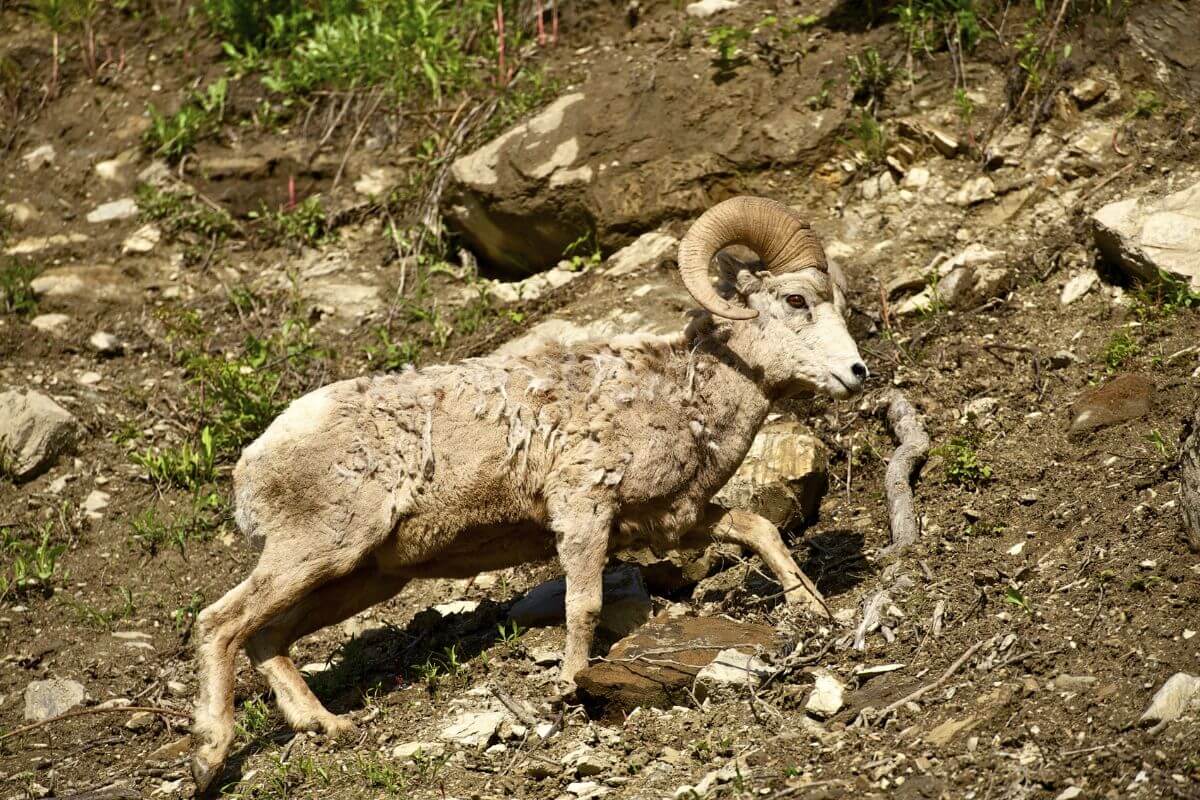
Montana is every game hunter’s paradise, boasting a rich array of top-tier big games across its expansive public lands. Whether you fancy giant elk, nimble deer, or rugged mountain goats, Montana’s wildlife offers a hodgepodge of species to explore.
Let’s take a closer look at some of the charismatic game animals you can find throughout the rugged terrain of Montana:
- Bighorn Sheep – Montana’s majestic bighorn sheep once roamed broadly distributed populations in the millions across Western North America.
- Bison – The largest hoofed animal on the continent, also called buffalo, or as the science buffs say it, the American bison.
- Black Bear – From revered photo ops to Montana’s world-renowned game hunting, this bear is known as “the gentle giant” among the big game.
- Bobcat – Hunting or trapping furbearers in Montana requires a license, and it is limited to residents. If you plan to hunt furbearers, keep in mind that only bobcats are allowed to be hunted in the state.
- Deer – Mule deer and white-tailed deer are abundant big game animals in Montana, and they have a wide distribution. Despite having evolved to thrive in different environments, both species are highly adaptable.
- Elk – This massive beauty represents not only big-game hunting but also a vital part of Montana’s conservation efforts.
- Migratory Birds – Doves, ducks, waterfowl, and a host of other birds make up a vibrant, fluttering community in Montana.
- Moose – Standing 6 feet tall at the shoulders, this robust fellow is the largest deer family member and tallest mammal in North America, offering an impressive sight on your Montana excursion.
- Mountain Goat – If ever there was a GOAT (Greatest Of All Time) in mountain climbing, it’s the mountain goat. These agile animals will leave you awe-inspired.
- Mountain Lion – Sprawling from Alaska to South America, their prevalence in the West makes them a prime species in Montana.
- Pronghorn Antelope – Stepping back in time, these resilient animals have not just survived but thrived through eras marked by ice and volcanic ash.
- Upland Game Birds – The resident artists in Montana’s avian gallery, their vibrant colors, and elaborate displays are a treat for the eyes.
- Wolf – Though they once weaved their stories throughout North America, the gray wolf is now mainly restricted to small enclaves near the Canadian border, epitomizing Montana’s commitment to preserving native species.
This is just a tasting platter, mind you. The spread across Montana’s public lands is much more varied and every bit as surprising as it is vast. Want to know where you can find them or how to track them safely and responsibly? The Montana Fish, Wildlife & Parks website is your one-stop shop for all this valuable info.
Remember, it’s not just about the spectacle but also about respecting and protecting these wild residents. So, pack your binoculars and hiking boots, venture out, and let Montana’s game species give you an adventure like no other.
2. Montana Nongame Species

In Montana, the term “nongame wildlife” is used to refer to a wide array of creatures that aren’t specifically classified as big game, upland game birds, migratory game birds, furbearers, or predators.
A nongame perspective might sound less adventurous than a big game, but it encompasses over 85% of the state’s mammal, reptile, bird, and amphibian species, totaling close to 500 different animals. These species contribute to Montana’s rich natural heritage and play a vital role in the state’s ecosystem.
Here are a few of the nongame species in Montana to keep an eagle eye out for the next time you’re out and about:
- Badgers – Solitary creatures primarily found on the great North American plains.
- Bald Eagles – The celebrities of our skies and the national bird of the United States, with their dark brown wings.
- Blue Heron – Graceful, leggy creatures that thrive in wetland settings.
- Golden Eagles – Bigger, badder, and generally spread throughout North America.
- Grizzly Bears – The OG predator in Montana, just remember, they’re not always as cuddly as your stuffed toy grizzly.
- Raccoons – They’re in all of Montana and are highly adaptable in any environment, although typically linked with agricultural and riparian regions.
- Red foxes – Forest regulars with a familiar dog-like appearance.
- Hares and Rabbits – They have 8 incarnations in the state.
- Squirrels – Not just tree dwellers, they’re often seen on the ground too.
- Prairie dogs – These engineers create prairie habitat homes for others.
All this talk about wildlife makes one see the world in a different light. You may not notice them every time, but these nongame critters are societal multitaskers – think pollinators, excavators, and even top predators — all in their usual day’s work.
They add color, figuratively speaking, to our lives, whether it’s the excitement of spotting a bald eagle gliding above us or the rabbits enjoying their form of rush hour traffic in meadows.
3. Montana Official State Animals
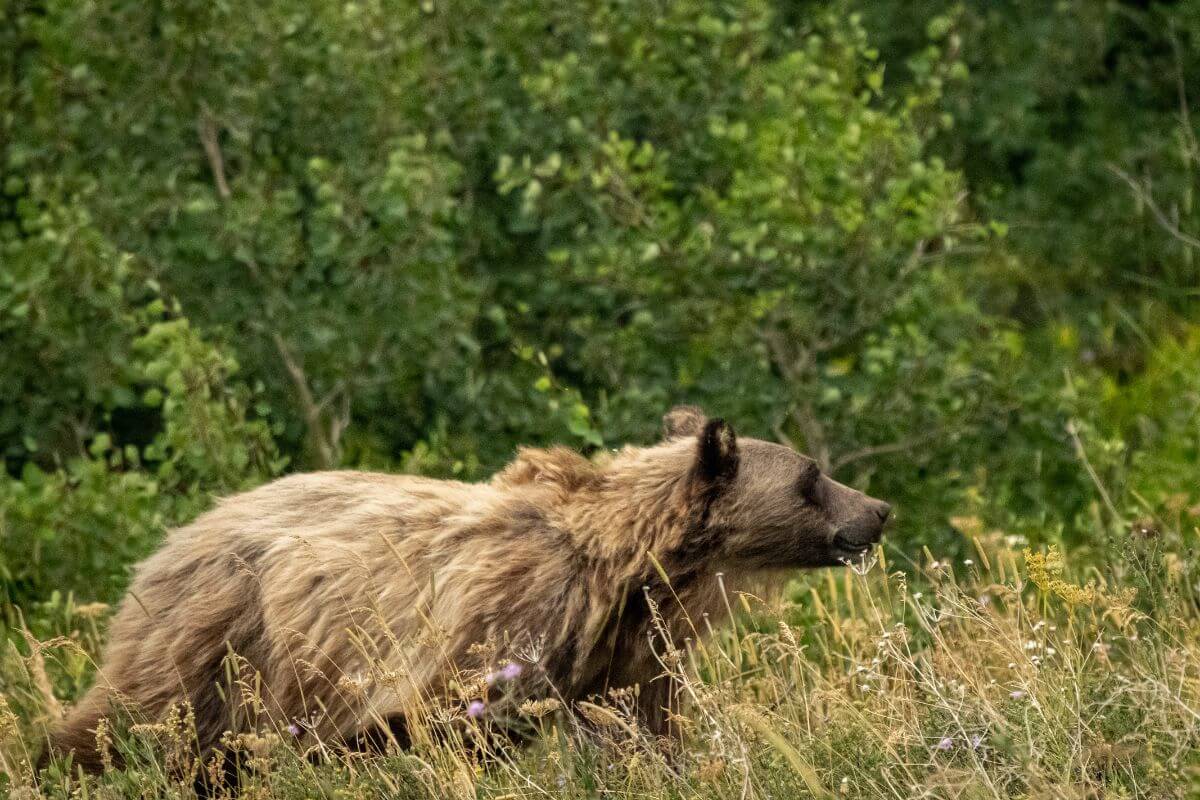
Montana is known for its diverse wildlife, and these official state animals represent the unique and beautiful species that call the state home. From the awe-inspiring Grizzly Bears to the melodious Western Meadowlarks, Montana’s wild family is as diverse as it is fascinating.
Here’s a quick cheat sheet to immerse yourself in Montana’s official fauna:
| State Symbol | Animal Name | Scientific Name | Description |
|---|---|---|---|
| State Animal | Grizzly Bear | Ursus arctos horribilis | Designated in 1983, this magnificent creature is a powerful symbol of the state. Montana boasts the largest grizzly bear population outside of Alaska. |
| State Bird | Western Meadowlark | Sturnella neglecta | Montana’s golden songster, serenading across agricultural meadows whether on a stakeout or in flight. |
| State Fish | Blackspotted Cutthroat Trout | Oncorhynchus clarkii | Discovered by William Clark, this resilient fish is a living symbol of tenacity and quality thriving in Montana’s pristine waters. |
| State Butterfly | Mourning Cloak Butterfly | Nymphalis antiopa | Known for its striking wing colors resembling draped dark cloaks, hinting at Montana’s more delicate and intricate side. |
| State Fossil | Duck-Billed Dinosaur | Maiasaura peeblesorum | Unearthed in 1978, these fossils revealed much about Montana’s deep history, even from the time when dinosaurs roamed her lands. |
In the vast landscapes of Montana, where snow-capped mountains meet expansive prairies, these official state animals stand as proud ambassadors of the state’s untamed grandeur. Knowing these distinctive selections is like wearing a secret key that unlocks Montana’s heart.
4. Montana Predatory Animals
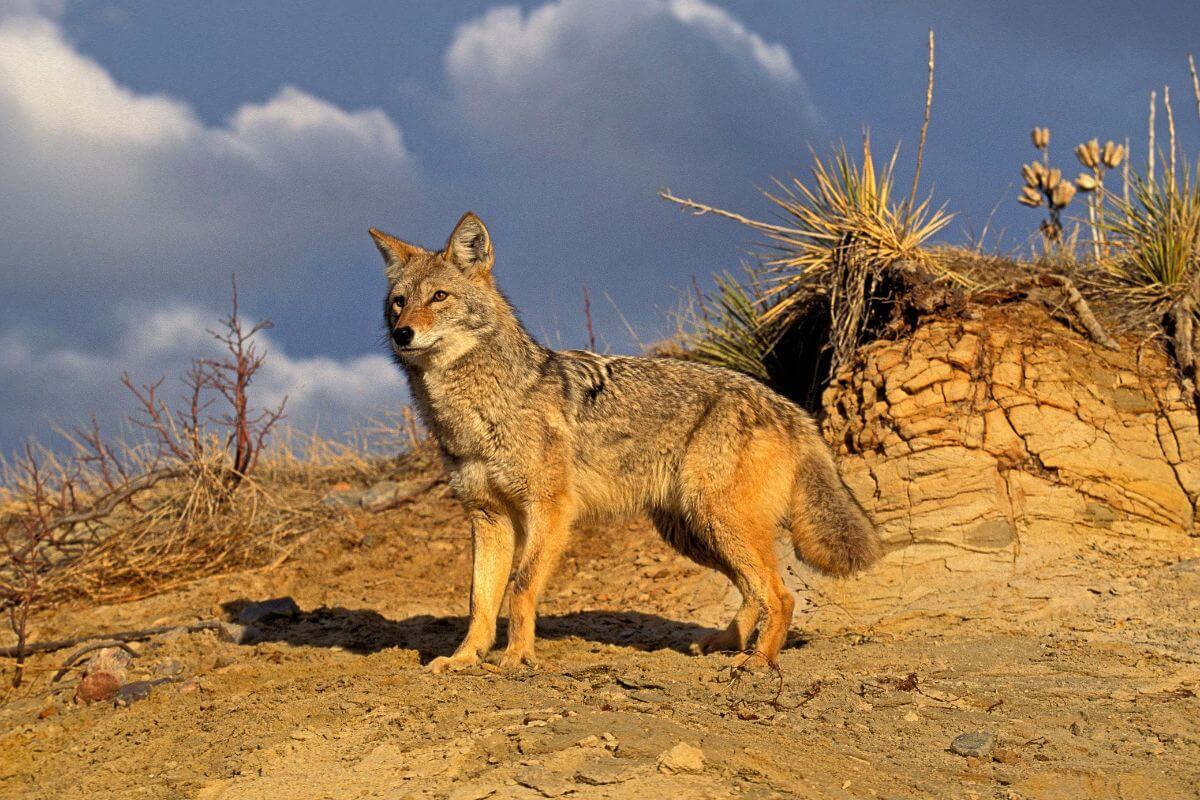
Welcome to Big Sky Country, where the vast wilderness resounds with the primal whispers of predatory prowess. Outside of the Montana’s iconic bears and wolves, here are some of the state’s other predatory inhabitants:
- Coyote – The coyote is a common predator in Montana and can be distinguished from wolves and dogs by the way it runs, with its tail down. These animals are known for their adaptability and can be found in a variety of habitats, from forests to urban areas.
- Weasel – The weasel, particularly the Long-Tailed Weasel, is the largest and most widely distributed of the three North American weasels in Montana. These agile hunters are known for their slender bodies and keen hunting skills.
- Striped Skunk – The striped skunk is a creature specific to North America and can be found in Montana. Adult males can weigh up to 14 pounds and are about the size of an average house cat. They are known for their distinct black-and-white coloring and their ability to release a strong odor as a defense mechanism.
- Spotted Skunk – The Western Spotted Skunk, also known as the civet cat, is a small and slender skunk with glossy black fur interrupted by distinct white stripes on the front part of the body. These animals are known for their agility and unique defensive tactics, which include handstands and backflips when feeling threatened.
While the term “predatory” might conjure fearsome imagery, Montana’s list of predatory animals might just surprise you. These wild animals play an important role in Montana’s ecosystem as they help regulate the populations of prey species and contribute to the overall balance of the environment.
Best Places for Wildlife Watching in Montana
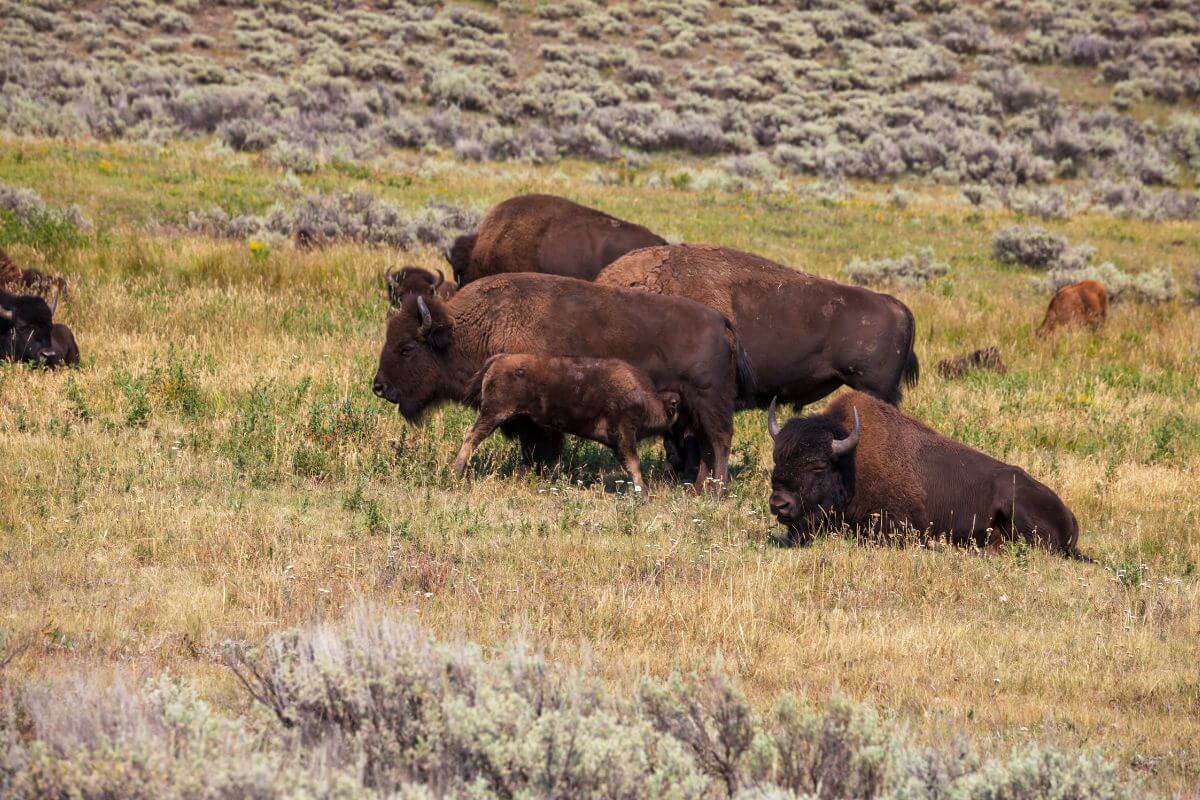
Montana’s diverse geography and topography contribute to a wide range of wildlife habitats, making it a prime destination for wildlife watching. Diving deeper into the treasure trove of Montana’s natural offerings, finding the best places for wildlife is a great way to connect with the state’s untamed beauty.
Whether you’re an avid birder, a photography enthusiast, or just someone seeking a glimpse of animals in their natural habitat, Montana has a mesmerizing array of locations to satisfy your curiosity. Just remember, when wildlife watching, it’s important to prioritize the safety of both yourself and the animals.
1. Montana National Parks
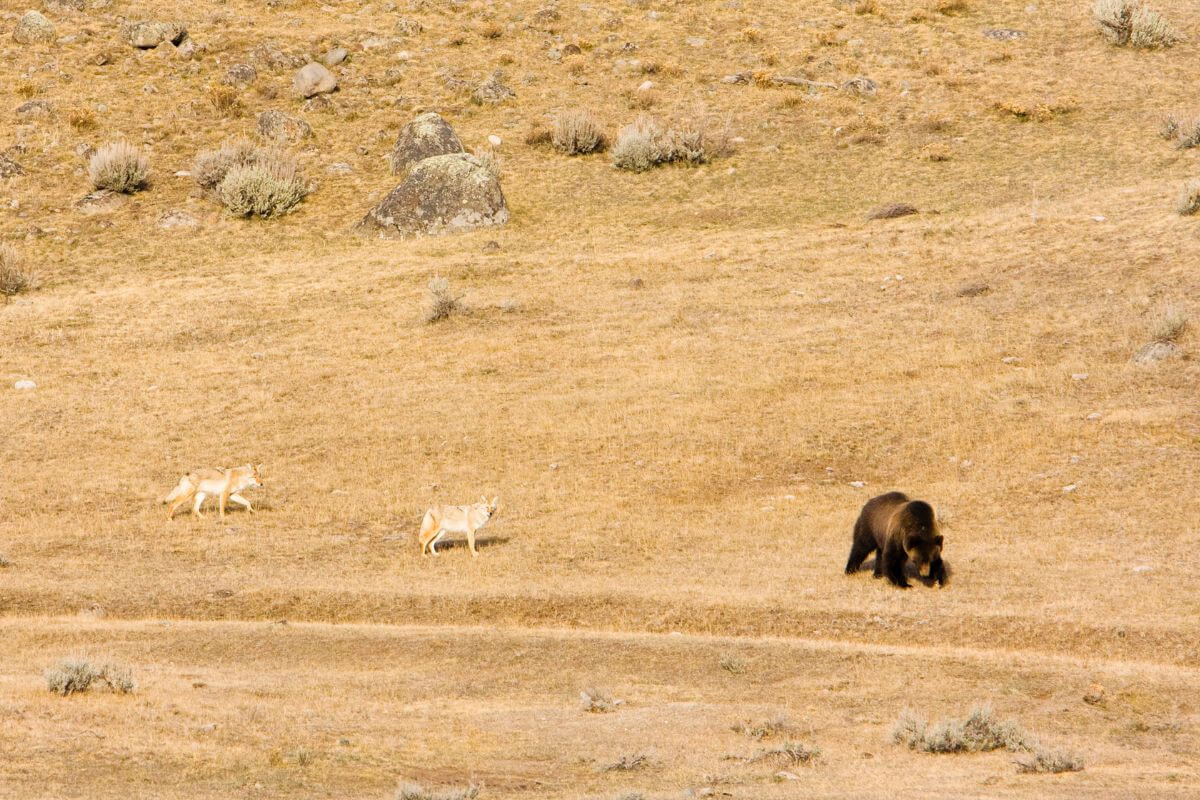
Montana’s national parks are a haven for wildlife enthusiasts. Glacier National Park and Yellowstone National Park, two of the top tourist attractions in the Treasure State, reign supreme in offering spectacular wildlife watching with hundreds of species that call these parks home.
Here’s a quick rundown of how many species are in Glacier and Yellowstone National Parks:
| Montana National Park | Amphibians | Birds | Fish | Mammals | Reptiles |
| Glacier National Park | 6 species | 276 species | A mix of native and invasive species | 71 species | 3 species |
| Yellowstone National Park | 5 species | Nearly 300 species | 16 species | 67 species | 6 species |
What’s particularly unique about Glacier National Park is its intact and relatively undisturbed ecosystem. The park’s diverse habitat types, including alpine meadows, forests, and lakes, provide a haven for a wide range of animals, from grizzly bears and wolves to mountain goats and bald eagles.
Similarly, Yellowstone National Park is renowned for its abundant and diverse wildlife, which are just as famous as its iconic geysers. The park’s unique geothermal features also create a habitat for specialized organisms, such as thermophiles and unique plant species.
Now, you’re probably wondering where to head to catch the action. Here are some popular destinations within Yellowstone National Park:
| Destination | Wildlife | Best Season to Watch |
| Fishing Bridge | Grizzly Bears | Early Summer |
| Hayden Valley | Bison, Elk, Black & Grizzly Bears, Wolves | Summer |
| Lamar Valley | Bison, Elk, Black & Grizzly Bears, Bighorn Sheep, Mule Deer, Pronghorn, Wolves | Year-Round |
| Mammoth Hot Springs | Bison, Black Bears, Elk, Mule Deer | Early Summer |
| Madison | Bison, Elk | Summer |
| North Entrance | Elk, Bison, Bighorn Sheep, Pronghorn | Winter |
| Northeast Entrance | Moose | Spring |
| Old Faithful | Elk, Bison | Summer |
| South Entrance | Moose | Spring |
| West Thumb | Elk, Moose | Summer |
Both Glacier and Yellowstone National Parks offer unparalleled opportunities for exceptional wildlife viewing. Visitors to these parks have the chance to witness some of America’s most iconic and diverse wildlife in their natural habitats, making Montana National Parks a must-visit for nature enthusiasts and wildlife lovers alike.
2. Montana State Parks
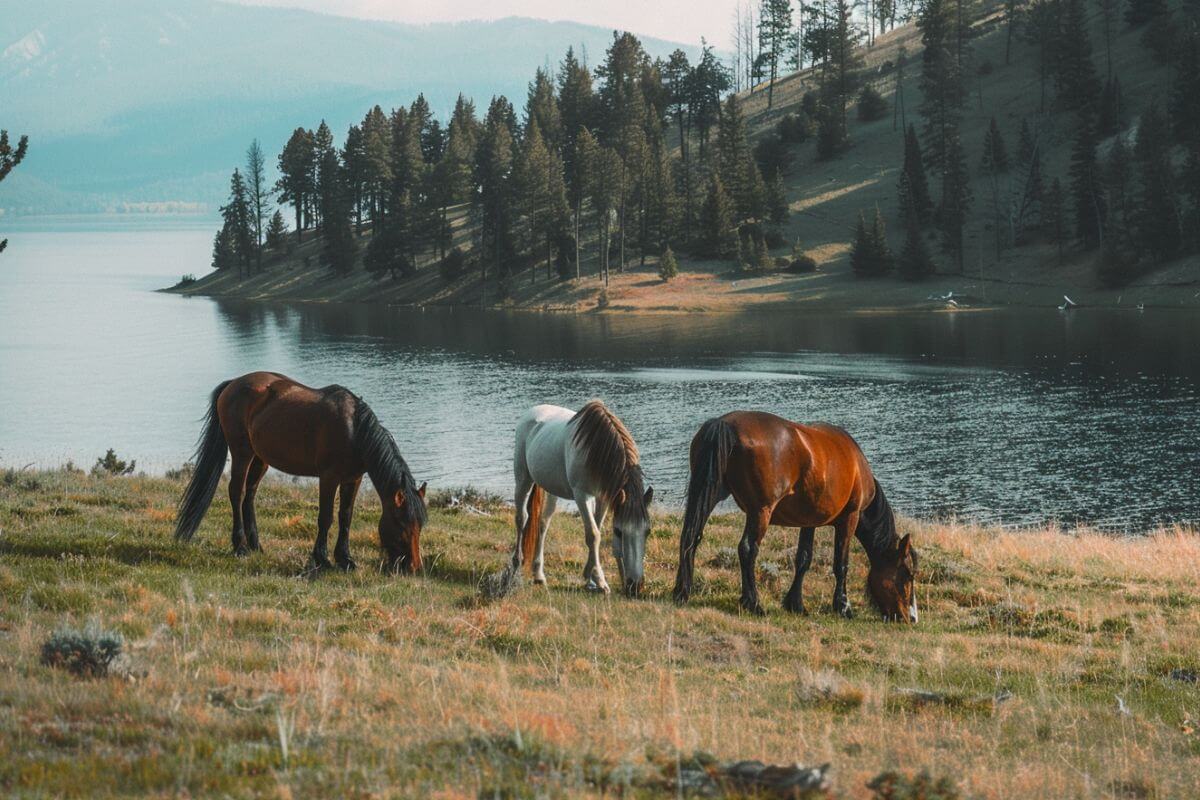
Montana’s state parks are the ultimate treasure troves for those seeking to encounter wildlife in its natural habitat. So if you’re itching to explore, the state parks are sure to captivate you.
Here are just a few of the many state parks in Montana I recommend, each with its unique blend of fauna, flora, and landscapes:
- Wild Horse Island State Park – This island on Flathead Lake, easily accessible by boat, is a veritable zoo, supporting thrilling species like bighorn sheep and, yes you read that right, wild horses!
- Makoshika State Park – From badlands to good company, this park in the east features golden eagles and prairie dogs going about their daily business.
- Lewis and Clark Caverns State Park – In addition to enchanting limestone caverns, a safari of sorts here can lead to an encounter with elk in an irresistible natural context.
Packing your binoculars and probably your best safari hat is essential here. You may wish to pay attention to the time of day or specific trails to maximize your chances of an up-close encounter.
So, if you’re up for an adventure that dives deeper into Montana’s wild soul, set your GPS for one of these state parks. They’re not just scenic stopovers; they’re canvases on which to paint unforgettable wildlife encounters.
3. Montana Wildlife Refuges
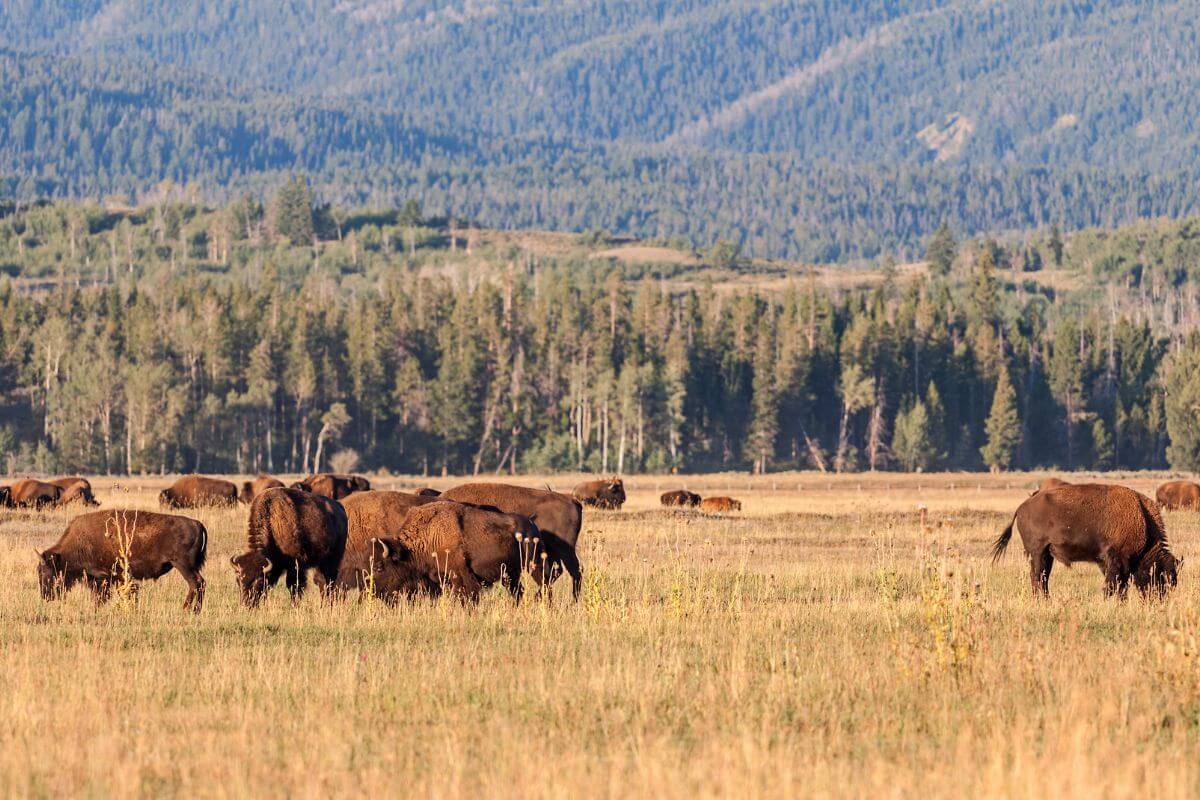
When it comes to glimpsing Montana’s wildlife in its natural habitat, you’d be remiss not to explore the state’s wildlife refuges. Not only are these sanctuaries crucial for the conservation of diverse wildlife, but they also provide some of the richest animal viewing opportunities you can find.
Expansive wetlands, towering mountains, and sprawling grasslands – these scenic backdrops form the canvas for your wildlife experience in Montana’s refuges. Here are a couple of must-visit wildlife refuges according to renowned nature lovers:
- The National Bison Range – Located just northwest of Missoula, this is one of the oldest wildlife refuges in America and is dedicated to the preservation of the iconic American bison. You can drive the seasonal 19-mile (30.6 km) loop road or hike on select trails to witness not only bison but also elk, deer, pronghorns, and a variety of bird species that call the range home.
- Lee Metcalf National Wildlife Refuge – Encompasses wetlands, riparian areas, and grasslands. Visitors can observe a variety of waterfowl, songbirds, raptors, and deer. The refuge also features interpretive trails and viewing platforms. Located near Stevensville in the Bitterroot Valley.
- Charles M. Russell National Wildlife Refuge – This vast, quiet expanse offers a pristine backdrop for spotting pronghorn, coyotes, and a rich array of birdlife, away from the busy tourist routes. The refuge is also a prime spot for anglers, with exceptional angling opportunities, adding another dimension to your wildlife-focused visit.
Now, I know drifting through a wildlife refuge might not be in everyone’s comfort zone, but trust me, your perceptions of nature will evolve. Take a guided hike, set up your camera on a designated platform, or enjoy a peaceful walk on an interpretive trail at these refuges.
4. Montana Zoos
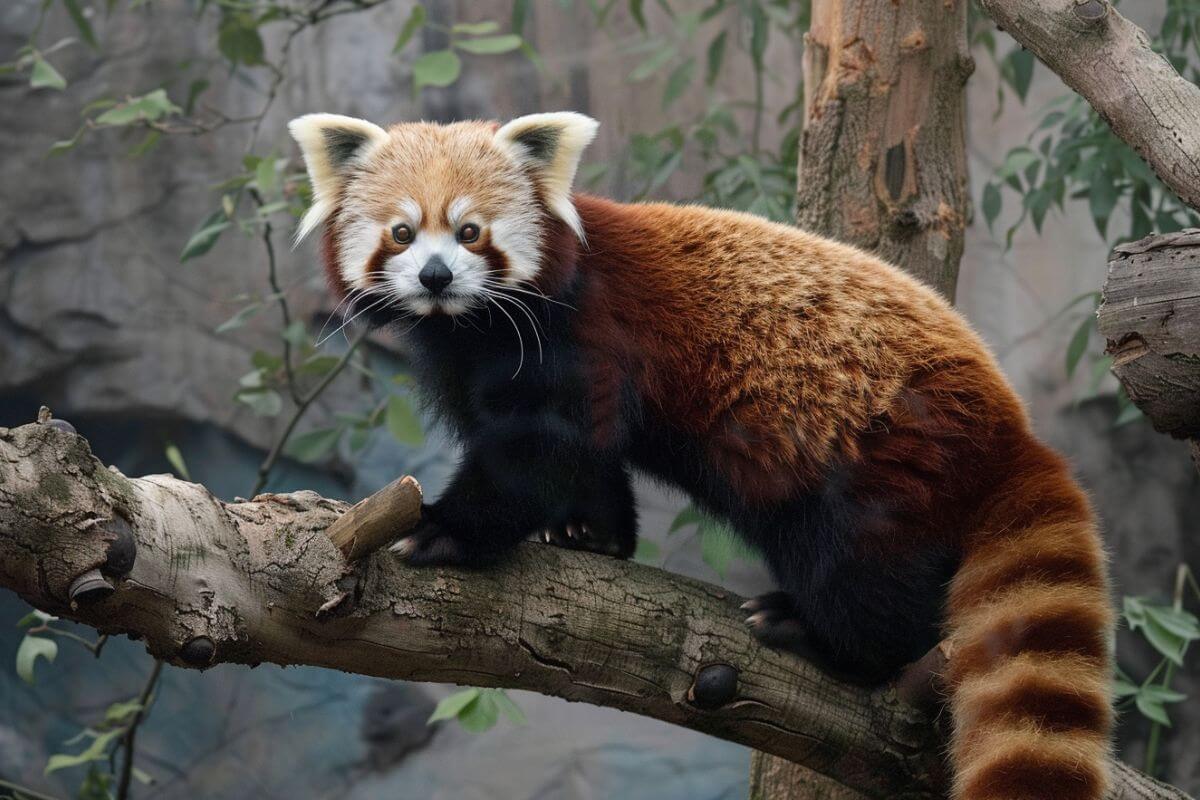
Now, what’s on the “accessible wildlife” menu in Montana? Striving for a more traditional zoo experience? ZooMontana in Billings helmed as the state’s solitary conventional zoo, is your go-to spot.
ZooMontana may be Montana’s lone traditional zoo but it’s anything but ordinary. This place is not just a zoo, it’s also a zoological and botanical garden and an accredited arboretum. It places utmost emphasis on its role as an educational center committed to preserving wildlife in Montana and along the 45th parallel of the earth.
What makes ZooMontana a great place for viewing wildlife is it showcases over 100 animals from around 56 species that typically call Montana home. From Amur Tigers to River Otters, and not forgetting to mention a Grizzly Bear, the zoo has an exceptional lineup.
it’s also worth noting that the zoo is all about “quality over quantity” when it comes to its animal collection. The focus is not on how many animals it houses but rather on the superior care and quality of the animals residing there.
Most of the animals here are rescues, adding a layer of compassion and ethical care to your wildlife viewing. It’s more than just passively looking at animals – it’s learning about their stories and, hopefully, respecting their natural habitat a bit more.
In a world where “fast fashion” has many rethinking ethical consumption, ZooMontana offers a resonant narrative of responsible animal care and community education. Expect to leave not just entertained, but deeply informed.
Wildlife Safety in Montana
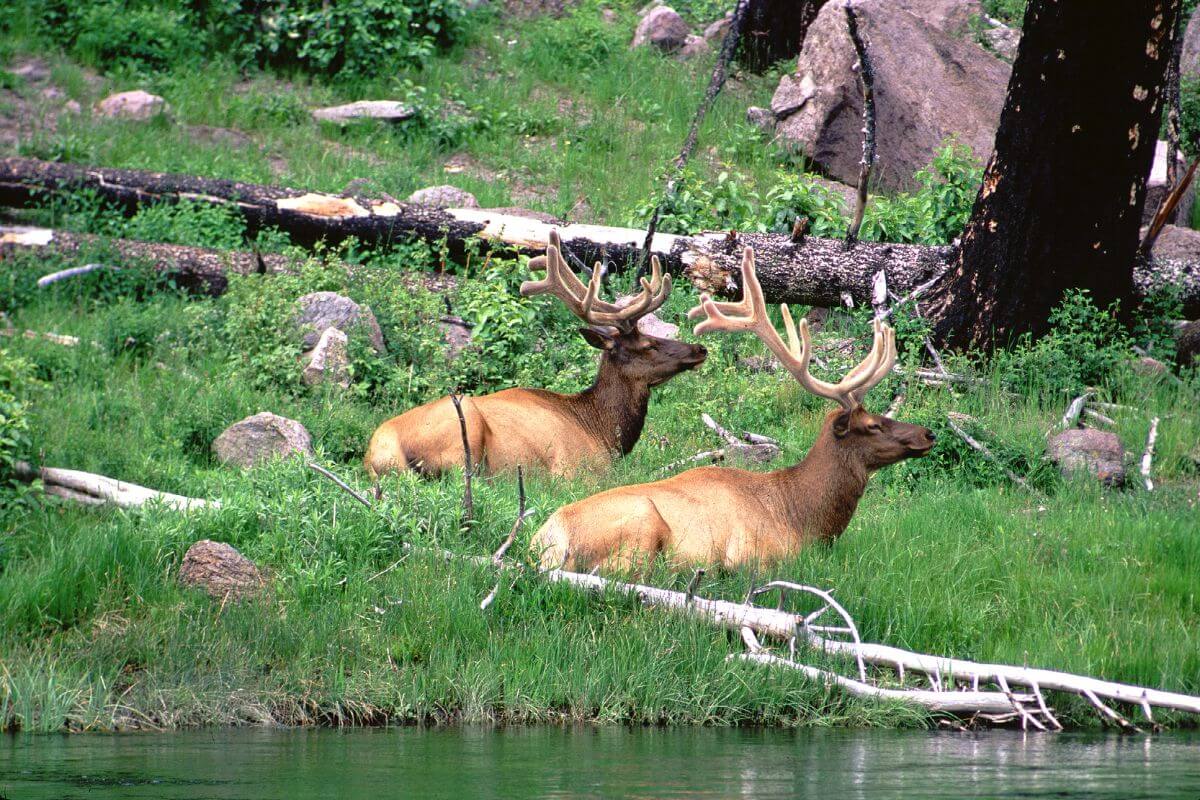
Montana is a haven for wildlife enthusiasts, offering a chance to witness bears, elk, and bison in their natural habitats. But interacting with these creatures requires understanding and respecting their space.
Whether you’re hiking in Glacier National Park or simply enjoying the views, here are some wildlife safety tips that will ensure both your safety and that of Montana’s magnificent fauna.
Tips for Wildlife Watching
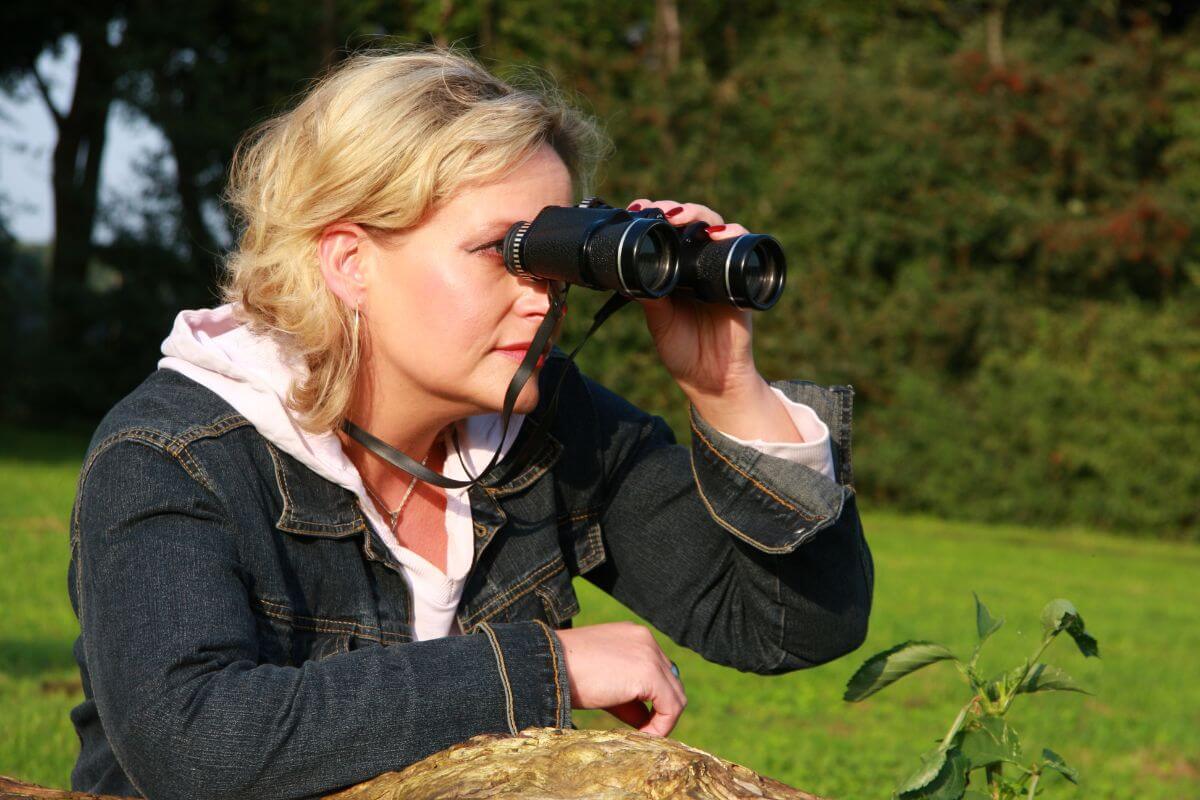
When you’re out there chasing a glimpse of Montana’s intriguing wildlife, it’s essential to remember that animals have their community and you are merely a visitor. Wildlife-watching at its finest isn’t just about spotting animals, it’s also about understanding their behavior without interrupting their daily habits.
Here’s how to do wildlife watching the right way in Montana:
- Dress the Part – Wear natural, muted colors and avoid glinting accessories. A bush hat or unscented lotion will be your best friend.
- Move Like Molasses – Slow, steady steps allow you to blend into the environment and prevent startling animals. Think of it as dancing with nature – slow, soft, and rhythmic.
- Safety First – If possible, avoid solo hikes, especially in Bear Country. Always carry bear spray, and let wildlife know you’re around by making periodic noise.
- Learn About Wildlife Behavior – Take the time to research some of the array of wildlife species in the areas you will be visiting. Understanding their behavior can help you predict their movements and avoid potential encounters.
- Conservation License – Don’t forget – if you’re 12 or older, a conservation license is required for accessing most state lands exclusively for wildlife viewing purposes. State parks, however, are an exception.
- Be Respectful – Avoid feeding, approaching, or especially touching any wildlife. Keep a safe distance as each action carries a ripple effect; your interaction could affect an entire ecosystem.
- Be Calm – Animals may sense tension, so try relaxing your muscles and avoid direct eye contact which can be interpreted as a threat.
- Keep Food Secure – Never feed wildlife, intentionally or unintentionally. Lock food and scented items in bear-proof containers when camping, hiking, or picnicking, as these can attract animals and lead to potentially dangerous interactions.
- Timing Is Everything – Dawn and dusk are the wildlife community’s rush hours. They’re either out for their early morning power walks or getting ready for a night on the town. Summer months are particularly active, especially in Western Montana.
To maximize your wildlife sightings, remember that respectful behavior is the key to achieving a harmonious co-existence. Operating under an air of respect towards these creatures and making a conscious effort to preserve their home will not only ensure you’re safe but also that you’re enhancing both their world and yours.
Tips for Living With Wildlife

Living in harmony with Montana’s diverse wildlife is one aspect that defines the state’s rustic appeal and untouched beauty. However, it’s crucial to remember that these animals, so integral to Montana’s pristine allure, deserve a life as seamless as its panoramic landscapes.
To co-exist responsibly with wildlife in Montana, it is important to never feed them, either directly or indirectly. While it may seem harmless to toss a scrap for a hungry fox, in reality, it ultimately harms not just the animals, but the entire ecosystem.
Why it’s bad to feed wildlife with human food:
- Supplemental feeding creates reliance on handouts, affecting their natural hunting instinct.
- Human food is often nutritionally insufficient, leading to health issues in the long run.
- Young animals conditioned to rely on humans may fail to develop typical foraging behavior, risking starvation without artificial food sources.
- Artificial feeding makes them lose the fear of humans, increasing human-wildlife conflicts.
- Feeding contributes to unnaturally high wildlife populations, increasing disease spread and resource competition.
- Feeding wildlife can attract predators like coyotes, bobcats, and mountain lions.
Wildlife populations are encroaching on human settlements due to habitat loss. As natural habitats shrink, our lawns and gardens are becoming the next best option for them. Julie, a Montana resident and ardent wildlife advocate, believes, “With a little effort, we can turn our gardens into sanctuaries rather than battlegrounds.”
Understanding wildlife behavior can help you adapt your lifestyle without causing unnecessary harm. Consulting with local conservationists and using wildlife-friendly landscaping can benefit both you and your furry neighbors.
Mastering the art of living with wildlife is part of what makes Montana so special. Instead of being passive viewers, let’s actively contribute to conserving these wonders that enrich Montana’s wild allure.
Montana Wildlife Final Thoughts
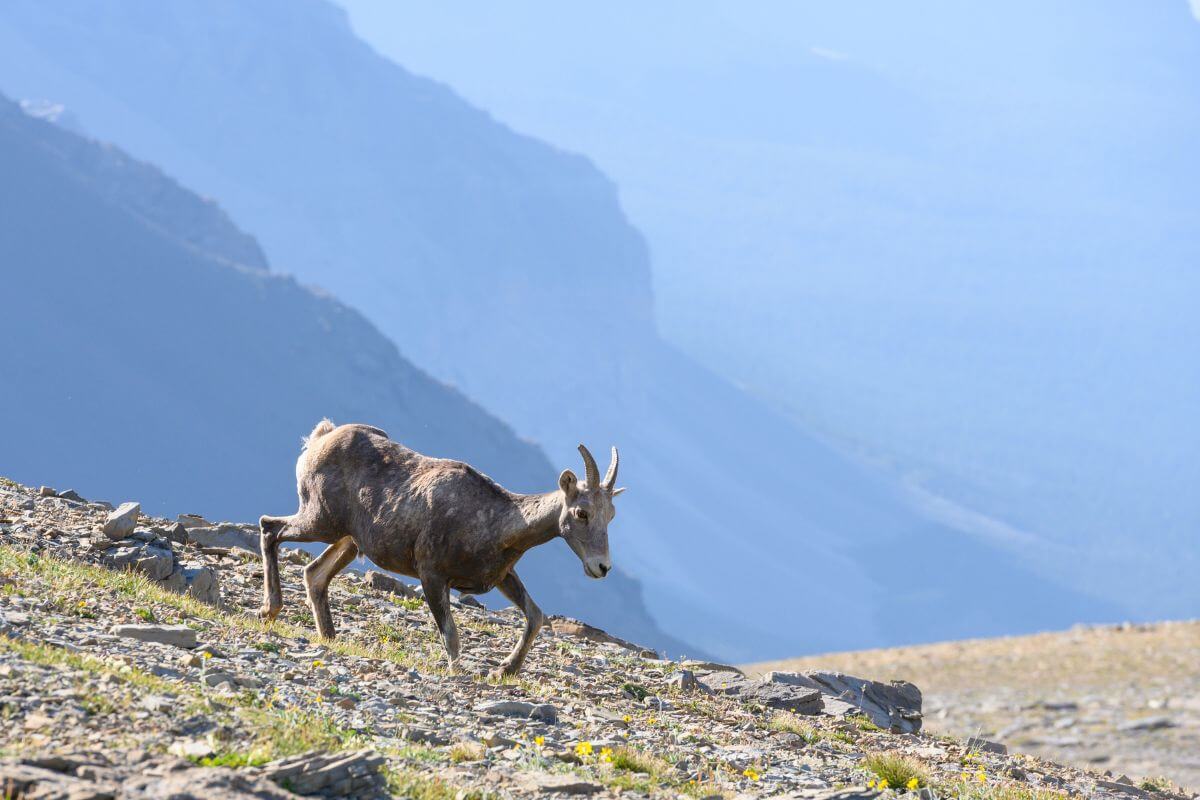
As we’ve embarked on our exploration into Montana’s vibrant wildlife, it’s evident that the state is far more than just its breathtaking landscapes – it’s the living, thriving creatures that call it home. From the mighty bison to the elusive gray wolves, Montana offers an unparalleled, diverse tapestry of animal life.
While Montana is home to some of the world’s most abundant wildlife populations, many species now face threats from development, unsustainable resource extraction, and a changing climate. Preserving this natural heritage requires a collaborative effort, to ensure a sustainable coexistence.
The state’s wildlife is a testament to the magnificence of nature, and it’s up to us to make sure that it continues to thrive for future generations to come. So, as you plan your next trip to Montana, why not venture beyond the predictable tourist spots and discover the untamed grace that Montana’s wildlife showcases so generously?
Montana Wildlife FAQs
1. Does Montana Have a Lot of Wildlife?
Montana is renowned for its abundant and diverse wildlife, featuring iconic species such as grizzly bears, wolves, bald eagles, and numerous other mammals, birds, and aquatic life thriving in its varied ecosystems.
2. What Part of Montana Has the Most Wildlife?
Western Montana, particularly regions around Glacier National Park and Yellowstone National Park, is known for having some of the most abundant and diverse wildlife populations in the state.
3. What Is Montana Known for Hunting?
Montana is known for hunting a variety of game species, including elk, mule deer, white-tailed deer, pronghorn antelope, bighorn sheep, mountain goats, and upland game birds.
Additionally, hunters in Montana pursue black bears, moose, and various waterfowl depending on the hunting season and regulations.
4. What Is the Main Animal in Montana?
The grizzly bear holds the honor of being the official state animal of Montana, a designation that recognizes its significance and representation of the state’s rugged wilderness and abundant wildlife.
5. What Is the Largest Animal in Montana?
The largest land animal in Montana is the North American bison, also known as buffalo. These massive herbivores once roamed the Great Plains in immense numbers and are now found in various parts of Montana, contributing to the state’s wildlife diversity and historical significance.
Immerse in the beauty of Montana through the articles below:
- Montana Guided Tours
- Road Trips Across Montana
- Outdoor Adventures in Montana
- Montana Hunting for Newcomers

